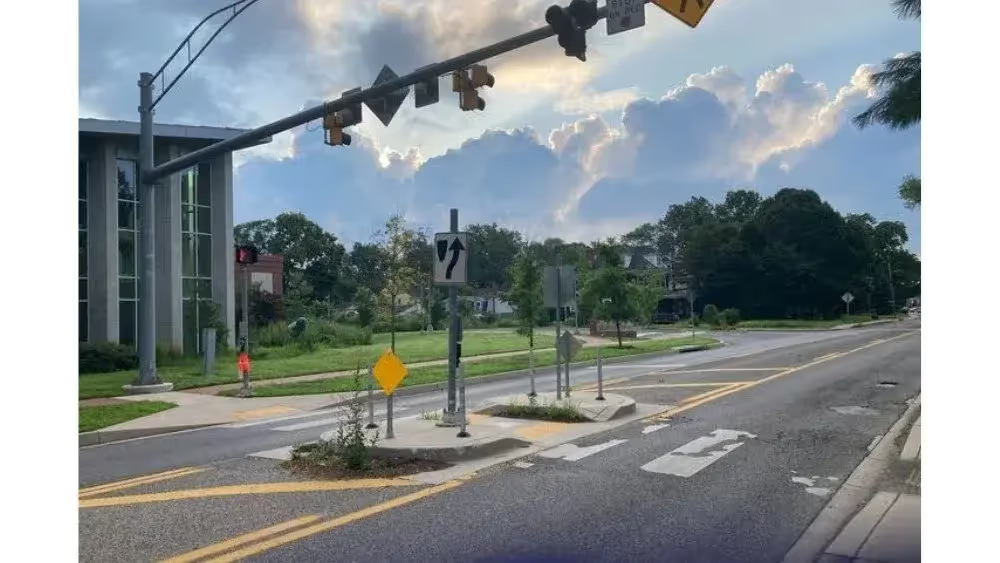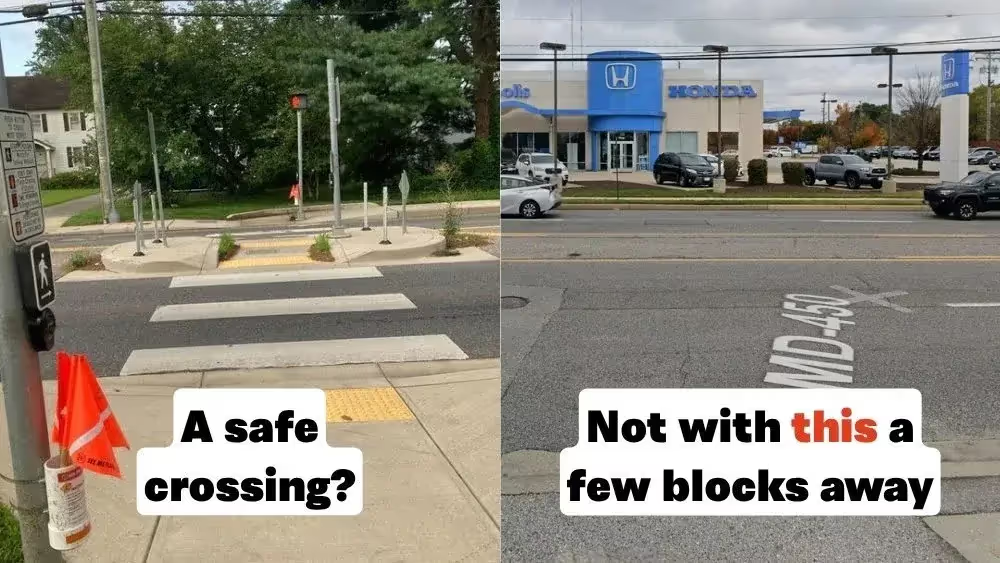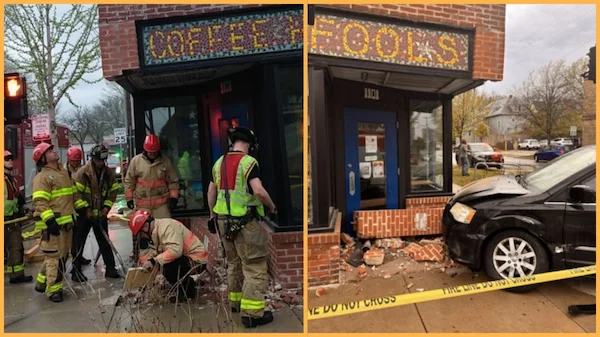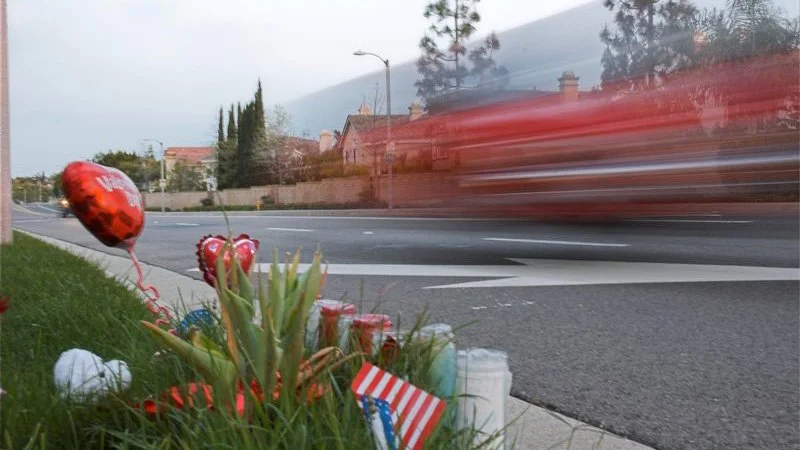Editor's Note: The challenges our cities face are growing, but so is the strength of this movement. Every story we share, every idea we spread, and every tool we build exists because people like you are committed to showing up. Your membership isn’t passive—it’s the momentum that makes change possible.
On April 23, 2025, an 11-year-old was struck by a vehicle while using the crosswalk in front of the public library on West Street in Annapolis, Maryland. Our Local Conversation group in the city, Strong Towns Annapolis, originally brought the collision to my attention. The child survived, but the incident exposed a deeper problem — one that extends beyond a single crossing.
I spent hours upon hours in that library as a child; my grandpa and I were no strangers to the donut shop a third of a mile down the street either. Since I hadn’t traveled through this area on foot in years, I parked my car and trekked out to photograph the crash location around 7 a.m. on a weekday earlier in July. The sense of vulnerability was steady and apparent during my time on site.
Vehicles passed me way quicker here than they do on the narrow streets downtown. The sidewalks on either side of the street felt like precarious places to be. With the high-intensity crosswalk (HAWK) signal active, the couple of cars that were kind enough to stop for me rapidly flashed their headlights until I rushed from one sidewalk to the other. If those drivers are anything like me, they were probably afraid they’d get rear-ended.
The problem isn’t simply that one crosswalk is dangerous. This segment of West Street looks like a city street but operates more like a high-speed corridor, especially during non-peak travel times. This section of West Street has one travel lane in each direction, with a posted speed limit of 25 mph. But the design of this stroad encourages motorists to drive faster than the limit displayed on signs.

Trees on this segment of the street sit farther back behind the sidewalks and do little to optically narrow the thoroughfare. The pedestrian refuge seems wide enough for a single wheelchair, yet it would easily become overcrowded if multiple road users — like students traveling to school or the library — crossed simultaneously. This crosswalk sits about 650 feet east of where West Street expands from two to at least four lanes of traffic, and speed limits increase to 30 and 35 mph. The crash location’s positioning within the wider transportation network increases the likelihood that motorists, especially those traveling eastbound, will speed directly through this crossing.
Since West Street is part of Maryland Route 450, this location sits along a state-controlled portion of the roadway. The Maryland State Highway Administration designation applies to portions of West Street between the downtown area and Solomons Island Road, which makes meaningful changes difficult for the city of Annapolis to implement. Meanwhile, turning movements into nearby driveways and onto side streets contribute to an environment filled with conflict points for pedestrians.
Safety Theater vs. Real Safety
In the months following the collision, bright orange pedestrian crossing flags appeared on both sides of the West Street crash location — a well-intentioned gesture that ultimately shifts the burden for safety onto the very people most vulnerable in this environment.
This is a crucial lesson for communities everywhere: A crosswalk adorned with a HAWK signal and orange pedestrian crossing flags is not an adequate response when a corridor itself is fundamentally unsafe.
It’s tempting to believe that signage or handheld flags can transform a dangerous road into a safe place for people. These measures are highly visible, inexpensive, and politically expedient. But they fail to address the real problem: the geometry, speed, and function of the street itself.
We see similar issues elsewhere in Annapolis. Take Forest Drive, the second major stroad of the city where some crossings lack pedestrian signals entirely. At its intersection with Tyler Avenue, vehicles turning from side streets and pedestrians attempting to cross are funneled into the same space without a leading pedestrian interval, forcing people on foot to compete with up to two lanes of traffic. These aren’t isolated design flaws — they are symptoms of a system built to move vehicles quickly, often at the expense of human safety.
We shouldn’t be surprised when crashes occur in these environments. They’re built for vehicular speed, convenience, and capacity, not for people.
It complicates matters further when roadways like West Street are partially under state jurisdiction rather than full local control. Even if city officials want to redesign the corridor, they face a bureaucratic and political uphill battle.
This is a familiar story in communities across the country. State transportation departments are often tasked with preserving regional vehicle throughput, which can clash with local goals for safety, walkability, and placemaking. As long as states prioritize moving cars over protecting people, communities will continue to face tragedies similar to — and often much worse than — the one that occurred here in April 2025.
What Real Safety Looks Like
Annapolis advocates are right to demand change. Community members — some associated with the Local Conversation group — have called for safer infrastructure and for local roads to be designed around people, not just vehicles. But real safety requires more than surface-level interventions.
Here’s what it takes to transform a corridor like West Street into a place that works for people:
- Narrower lanes to reduce speeds and signal to drivers that they are guests traveling through a place that prioritizes people on foot.
- Optical narrowing techniques — such as pavement markings, planters, and roadside trees — to visually tighten the corridor and calm traffic.
- Physical elements — like bollards, curb extensions, and wider pedestrian islands — to protect people and shorten crossing distances.
- Reduced speed limits enforced by street design that makes lower speeds feel natural and comfortable to drivers.
- Local control over local streets, so cities can implement the design solutions their communities need.
Safety is not the product of asking pedestrians to wear brighter clothing or carry orange flags. It’s the result of streets designed — and governed — in a way that puts people first.
Communities like Annapolis deserve better than safety theater. The child struck on West Street — and everyone who feels fear stepping off that curb, the way I do — reminds us that the stakes are far too high for half measures.
It’s time we stop accepting the illusion of safety and start demanding the real thing.
If your community is facing similar challenges and you’re ready for a change, you can start by documenting and sharing the real conditions on the ground. Engage both your local officials and your state Department of Transportation representatives to demand design changes that address root causes, not just superficial fixes that may or may not address symptoms. If you want to connect with like-minded individuals, join the Strong Towns movement and look for a Local Conversation in your area; we’ll help connect you with other street safety advocates.





